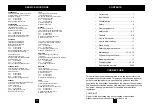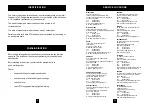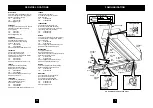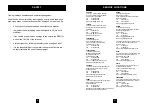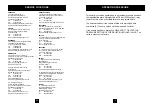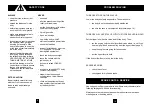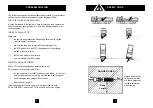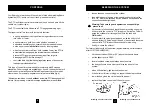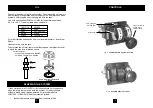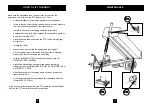
8
CONTROLS
17
BLEEDING THE SYSTEM
•
loosen the hose connection at the cylinder
•
then with the pump running at low speed, put the control valve
into 'TIP'. After a few seconds any air will have escaped and the
connections can be tightened.
Warning: Take care to guard against the escape of high
pressure oil
•
tip the hoist to full stroke and leave the pump running on engine
tick-over with the control in 'TIP' for approx. 5 minutes. This will
purge the cylinder of air through the oil into the tank and
filler/breather
•
if the hoist still shows signs of trapped air, tip the body to full
stroke a further 10 times, and at the end of each stroke leave the
cab control in 'TIP' for about 30 seconds before lowering
•
finally, re-check the oil level
For later cylinders with a bleed screw (approxiamately, serial numbers
after LH017000 / LM002100).
•
lift the body to about 300mm (12") above the chassis frame
•
put the tipper lever in 'HOLD'
•
locate the bleed screw and slacken about one turn
•
the body will come down slowly and force the air out of the
system
•
when oil flows freely, tighten the bleed screw
•
if the hoist is still jerky, or sluggish, repeat the whole procedure
•
lower the body, and top up the tank with clean oil
•
replace the plastic cap on top of the outer cover
Bleeding an outer cover hoist
Bleeding an eye-ended hoist
Your Edbro hoist works best if the vehicle is fitted with matching Edbro
hydraulics (PTO, pump, valves, oil tank, pipes and controls).
The PTO and tipper controls are combined in one unit and work off the
vehicle's air system (fig. a).
The PTO control switch is fitted with a PTO engaged warning light.
The tipper control is a lever with four safety features:
•
a spring-loaded device stops it from being accidentally moved
into 'raise' or 'lower'
•
a spring return to 'hold' from 'raise' position, known as a
deadman's handle function, ensures the driver keeps his hand
on the tipper control all the time the body is being raised
•
when the lever is moved from 'hold' towards 'lower', the PTO is
automatically disengaged; this internal mechanical feature
prevents PTO, pump or gearbox damage if you forget to
disengage the PTO before driving off
•
controlled lowering (feathering) regulates speed of descent for
loaded or part-loaded bodies.
This type of control is recommended for conformity with European
standards. Other controls are available but, if used, the bodybuilder will
need to ensure that all Essential Safety Requirements are covered by
other means. For example, separate controls are available (fig. b).
*Alternative combined controls without automatic PTO disengagement
feature (for spreading or static discharge applications) are available.



